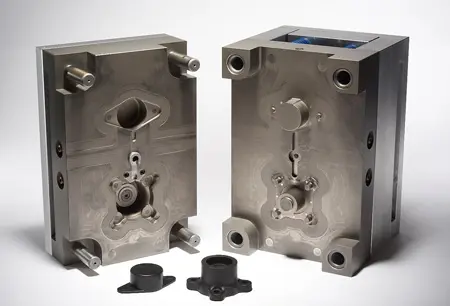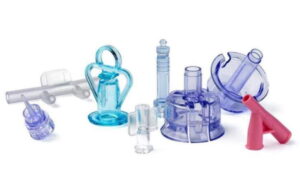Injection molding has emerged as one of the most transformative technologies in the field of manufacturing, revolutionizing the production of a wide range of products. With its ability to efficiently and cost-effectively produce complex parts and components, injection molding has become a go-to method for industries spanning automotive, electronics, packaging, medical, and more. In this article, we delve into the fascinating world of injection molding, exploring its process, advantages, applications, and the future of this innovative manufacturing technique.
Understanding Injection Molding:
Injection molding is a manufacturing process that involves injecting molten material, typically plastic, into a custom-designed mold cavity. The molten material solidifies within the mold, taking the desired shape of the part or component. The process is highly automated and can be repeated numerous times with great precision, ensuring consistency and accuracy in the final product.
The Injection Molding Process:
The injection molding process consists of several key stages:
- Mold Design: A crucial step in the process is the design and creation of a mold. Molds are typically made from steel or aluminum and are precision-engineered to define the shape and features of the final product.
- Material Preparation: The chosen material, usually in pellet or granule form, is carefully selected based on its properties and suitability for the application. The material is then melted and homogenized in an injection molding machine.
- Injection: The molten material is injected under high pressure into the mold cavity through a nozzle. The material fills the entire cavity and takes the shape of the mold.
- Cooling and Solidification: Once the mold cavity is filled, the material is cooled to solidify and harden. Cooling can be facilitated through the use of coolant channels within the mold or external cooling methods.
- Ejection: After the material solidifies, the mold is opened, and the newly formed part is ejected from the mold cavity using ejection pins or plates.
Advantages of Injection Molding:
- Versatility: Injection molding can produce complex and intricate shapes with high precision, allowing for the creation of intricate features, fine details, and varying thicknesses.
- Efficiency: The process enables high-volume production with rapid cycle times, resulting in cost-effective manufacturing and increased productivity.
- Material Variety: Injection molding supports a wide range of materials, including thermoplastics, elastomers, and some metals, offering manufacturers a broad spectrum of choices to suit their specific needs.
- Consistency and Reproducibility: The automated nature of injection molding ensures consistent and repeatable results, minimizing variations between parts and reducing waste.
Applications of Injection Molding:
The versatility and efficiency of injection molding have found applications across numerous industries:
- Automotive: Injection molding is used for producing interior and exterior parts, such as bumpers, dashboards, door panels, and more, offering lightweight, durable, and cost-effective solutions.
- Electronics: The precision and repeatability of injection molding make it ideal for manufacturing components like connectors, housings, switches, and circuit boards.
- Packaging: Injection molding is widely employed in the production of bottles, caps, closures, and packaging containers, providing manufacturers with the ability to create intricate designs and ensure product integrity.
- Medical: The medical industry benefits from injection molding for producing devices, equipment, and components, including syringes, surgical instruments, implantable devices, and diagnostic equipment.
The Future of Injection Molding:
As technology advances, injection molding continues to evolve, incorporating innovations such as micro-injection molding, multi-shot molding, and hybrid processes. These advancements enhance the capabilities of injection molding, enabling the production of increasingly complex parts with greater efficiency, lower costs, and reduced environmental impact.
Additionally, the integration of digital technologies like computer-aided design (CAD), simulation software, and additive manufacturing techniques further enhances the design, prototyping, and production phases of injection molding, making it a more versatile and flexible manufacturing solution.
Conclusion:
Injection molding has undoubtedly revolutionized manufacturing by offering a cost-effective, highly efficient, and versatile method for producing a wide range of products. Its ability to create complex shapes with precision and consistency has made it an invaluable technique across various industries. As technology continues to advance, injection molding is poised to continue pushing the boundaries of manufacturing, contributing to a more innovative and sustainable future.
Reach out to us today and learn about our injection molding capabilities that meet your product needs.



